Neptune’s Moons
Reproduced with permission from the neOnbubble Know You Some Science series of student learning guides. What is Neptune? Neptune is the outermost planet in our solar system. Pluto used to sometimes be the outermost planet (its orbit and that of Neptune crossed over occasionally) but it was relegated from the list of planets after going into administration during the recession of the early 21st century. Neptune is a gas giant world named after the Roman god of the sea and the first planet to be detected using mathematics rather than eyeballs. Its presence was later confirmed by eyeballs because nobody trusts mathematics. Oh, mathematics says it’s your friend and it will turn up but then it lets you down. What is a moon? A moon – or satellite – is a body that has been captured gravitationally by a planetary body. Moons typically orbit planets trying to gather enough speed to escape the pull of the planet to which they’re bound because only by being set free can they possibly hope to be re-classified as a rogue or dwarf planet of their own and that’s where the big money sponsorship deals are made. What are Neptune’s moons? Neptune has thirteen known moons but most of them are small and boring. Here are some of the more interesting ones: Triton Triton is the largest of Neptune’s moons and is named for the god of the sea’s most-treasured possession, the trident. The person who did the naming had a cold, though, and was misheard on the phone. Triton orbits Neptune in the opposite direction to all the other satellites. Some people believe that this is because Triton is an artificial construct put in place to determine whether we have advanced as a species far enough to question the absurdity of its presence. But these people are nutcases. More likely, Triton is simply a non-conformist rebelling against the man. Triton’s surface is mostly chalk. It couldn’t be more different from our moon, although that’s not because our moon is made of cheese; it’s simply that our moon’s surface isn’t mostly chalk. Proteus Photographed by Voyager 2 in 1989 as it passed Neptune and its moons, this picture shows Proteus, the largest of Neptune’s satellites after Triton. Proteus has an irregular shape as it is still growing but in time it will become a beautiful, spherical moon just like all the other great moons in the solar system. The black dots on the image do not actually exist on the surface of Proteus. In 1989 Voyager 2 had attained level 2 of sentience and was attempting to encourage its creators back on Earth...
The Surface Of Mars
Mars, home of Smash-loving robots and warlike creatures susceptible to coughs and the music of Slim Whitman, also known as the red planet. Because it’s red. Just a lot of red dust and rocks and mountains under a sorta pale-reddish sky. A handful of Rovers from Earth here and there, a little bit of ice on the caps, but mostly red, right? Not so right. Get your inquisitive, helpful self along to Planet Four and you’ll get access to one heck of a load of pictures taken of the surface of Mars from the Mars Reconnaissance Orbiter. These photos will show different areas of the planet over the course of a year and the formations of carbon dioxide blotches or fans as the seasons alter. By analysing these images you’ll be able to aid in the mapping of wind patterns across Mars. You’ll be helping science! Here: have some more pictures from Mars! Below we can see the famed Spotted Dick Plateau on Mars. These markings in the next picture look a little like tiger stripes but it would be crazy to think that Mars ever needed a means to camouflage itself among long grass when stalking prey. These are far more likely to be giant worm trails. Vast plains covered in dried, cracked parchment. Were the ancient Martians trying to write a message that we could read across the vast distance of space. We may never know for sure but let’s assume so. Scientists won’t confirm whether the regular channels in this next picture of Mars indicate the presence of cultivation in Martian history. But they won’t deny it either. Mostly, they won’t answer my calls. And here we can clearly see that the native Martians have constructed a side-on portrait of one of their kings; Martians, it appears, have two mouths, probably adapted so that one can speak while the other one eats some lovely, lovely, red Mars dust. Did I say that you should head along to Planet Four? I thought so. So why are you still reading...
Previously, In Science
A round up of recent science news stories and my take on them. Let’s start with this article from the BBC: Big Bang: Is there room for God? Perhaps a padded one so he doesn’t hurt himself. Otherwise, I’m going to go with no on this story. The general gist, though, is that some physicists, theologians, and philosophers got together to talk about what happened before the Big Bang. This is never going to be a productive meeting and will only ever end up with the the rational members either saying something to offend the loonies or backing down to appease the nutjobs and end the round-and-round-the-facts game being played. You might as well replace “theologians” with “reptilian overlord conspiracy theorists” for all the good ever bringing them to a discussion about things that actually exist are concerned. And as for philosophers: I’ve sat through some talks with philosophers and I’ve got a real problem with them (you’d never guess). Just like theologians their whole essence of being is in talking about unknowable concepts. Endlessly. Question them on anything and all you get is “are you sure?” with a knowing smile. Demonstrate that what they’re saying is gibberish and you’ll get a reworking of the same point of view in order to make it more vague than it already was. It’s the antithesis of science where contradictory evidence is followed by refinement or discarding. Gah! Next, an Earth-sized planet has been discovered pretty close by in Galactic Terms (always in proper case, always italicised): Alpha Centauri has a planet! The planet orbits close in to Alpha Cen B, and is technically called Alpha Centauri Bb – planets have lower case letters assigned to them, starting at b. Its mass is only 1.13 times the Earth’s mass, making this one of the lower mass planets yet found! But don’t get your hopes up of visiting it – its period is only 3.24 days, meaning it must be only about 6 million kilometers (less than 4 million miles) from its star. Even though Alpha Cen B is a bit cooler than the Sun, this still means the planet is baking hot, far too hot to sustain any kind of life as we know it, or even liquid water. Even though it’s close enough to visit with today’s technology within a lifetime I’m always impressed by the science behind even making finds like this. Consider this: if our sun were a bowling ball then Earth would be a pea about twenty metres away. Look up at the night sky and find Alpha Centauri; it’s smaller than a bowling ball. It’s smaller than...
Honey, Superbugs, and Bullshit
Just the other day I saw someone post a link to a site called RiseEarth and to an article in particular titled Mysterious Honey Discovered That Kills All Bacteria Scientists Throw At It. Being someone with something of a scientific mind this attracted my attention immediately; a natural ingredient, I thought, that can kill all known bacteria. Could it be? Or even bee? Yes, I think puns in my head. But, even as I thought those three words “could it be?” a simultaneous thought – since I’m also someone with a skeptical mind – also raised a hand, waved a little for attention, and spoke up: not bloody likely. So, to the article about bacteria-killing honey then! Australian researchers have been astonished to discover a cure-all right under their noses — a honey sold in health food shops as a natural medicine. Oh dear. Health food shops. Immediate red flag. Maybe it’s okay, maybe it’s still genuine. Far from being an obscure health food with dubious healing qualities, new research has shown the honey kills every type of bacteria scientists have thrown at it, including the antibiotic-resistant ‘superbugs’ plaguing hospitals and killing patients around the world. That’s better. That’s certainly alleviating some concerns. Because my initial thought was that this actually was an obscure health food with dubious healing qualities. But apparently it isn’t. Good, good. Assuming I take it at its word, which I don’t, but let’s carry on. Professor [Dee] Carter’s two sons, Marty, 8 and Nicky, 6, think it’s funny the way their mother puts honey on their sores. But she swears by it, telling stories of how quickly it cures any infection. […] The curative properties of various types of honey have been known to indigenous cultures for thousands of years, and dressing wounds with honey was common before the advent of antibiotics. Uh oh. On the one hand that’s a real professor (see (not much bee research going on there, though)). On the other hand backing up the scientific claim with one sentence about kids relating to their mother’s way of treating wounds and another talking about remedies from antiquity… ooh, that’s another, massive red flag. At this point I was distracted by some of the other articles on the RiseEarth website. These articles include: Area 51 Builds Massive Alien Pyramid Illuminati Occult Symbolism in London’s Olympic Closing Ceremony How Hemp Oil Cures Cancer And Why No One Knows If you were a manufacturer of red flags then right now you’d be doing a roaring trade as I’d be buying up all your stock. I don’t think I need to fully explain why it’s...
Previously, In Science
Okay, this is another attempt by me to force my hand at updating the site regularly without relying solely on posts automatically coming in from Google+ as everyone likes variety. Well, I like variety anyway and I’m the one who really counts here. So, a frequent (let’s not pretend it’s going to be regular because I think we all know me well enough by now to know that’s not going to happen) update about recent happenings in the world of science will begin today. Why science? Because it’s one of the categories I categorise this site’s content into, that’s why. I don’t want to create another category. Also: I like science. Also: science is cool. I could have decided to go with a frequent posting about events in the world of geography but it just wouldn’t have had the same wow factor. Enough waffle. To the science news! Mars, Curiosity Big science news has come from Mars and the Curiosity rover which recently landed there safely despite extreme complexity in the manoeuvre and a track records of successful probes on Mars little better than flipping a coin. Martians have not been involved in stacking these odds against us. That would be mental. Martians couldn’t care less. They’re a very relaxed dust-based hive mind. Curiosity (or the Mars Science Lab to give it its less-inspiring name) has had a software upgrade now and has started sending back some more-detailed photos from its surroundings – particularly Mount Sharp (named after slavery abolitionist Granville Sharp who the mountain looks a bit like in profile) – so if you are super-keen on seeing rocks and ground in better resolution than John Logie Baird ever thought possible then you’re a very happy bunny indeed. Coneheads I love that movie. That’s not science news. It’s not news. And it’s not science. However… According to World Science: “In a trend that can be identified going back to the mid-1800s, [white, American] U.S. skulls have gotten bigger, taller and narrower as seen from the front, said Richard and Lee Jantz, a husband-and-wife team of forensic anthropologists at the University of Tennessee, Knoxville. They also found that faces have become significantly narrower and higher, though this shift is less pronounced than those affecting the whole cranium.” The article also goes on to state that “[a] larger head could allow for greater intelligence” and it’s there that I started laughing too much to continue. I don’t like statements like that. A larger head could equally allow for greater room for bees to hide. Has anyone checked if the decline in bee population is connected to cranial development in American...
What Are Volcanoes?
Reproduced with permission from the neOnbubble Know You Some Science series of student learning guides. What Are Volcanoes? A volcano is a special type of mountain so to understand what a volcano is we must first determine what a mountain is. What Is A Mountain? Some scientists believe that these can be made out of molehills but those sandwiches in the fridge were clearly marked as mine and I don’t think it’s unreasonable of me to scream about it in the cafeteria at lunch time; I was very hungry; I had been sciencing all morning without a break. However, mountains are really a special type of hill so to understand what a mountain is we must first determine what a hill is. What Is A Hill? A hill is a raised area of land on the ground. If you needed to be told this then you probably don’t know what the ground is either. On we go. What Is Ground? Coffee beans are ground. The aromas released during this process are to die for and sometimes this very process is more pleasurable than the consumption of the hot drink itself. I like a nice, full-flavoured coffee and find the lighter bean variants can be a little too bitter. I have similar tastes when it comes to wine and real ale too; dark, heavy, not bitter. Now you know what to buy me when you bump into me at the Sciencorium. What Is The Sciencorium? The Sciencorium is where we sciencercise all day long, sciencing up things for all of mankind. Just last week I scienced an invisible ray. I’ve no idea what to do with it yet so it’s sharing a shallow pool with the invisible flounder and the invisible dogfish (I think) but that’s not the point; sciencing is about whether you can do something, not about whether you should or what benefit it might possibly have. Anyone who tells you different is a hippy. What Is A Hippy? A hippy (short for hippopotalayabout, from the ancient Greek for “does nothing, eats like a horse”) is an inhabitant of San Diego, birthplace of the atomic bomb. Hippies don’t like working or sciencing but they do like marijuana and this evil drug tells its addictees to complain about everything using placards and body odour. What Is Body Odour? The human body is covered with a layer of skin that looks solid to the naked eye but under a microscope it can be seen that this layer is perforated much like a teabag. If you were to hold a teabag to your nose and sniff deeply you would smell the...



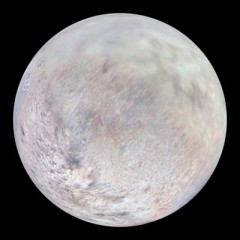
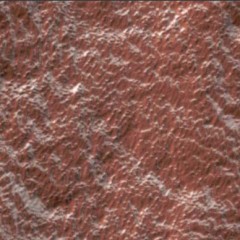
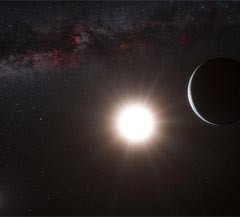
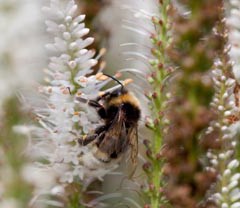
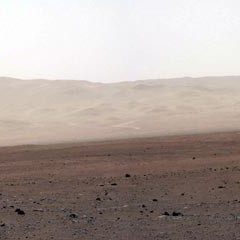
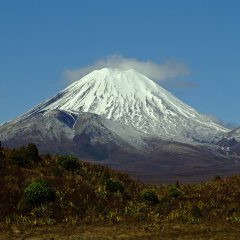











Recent Comments